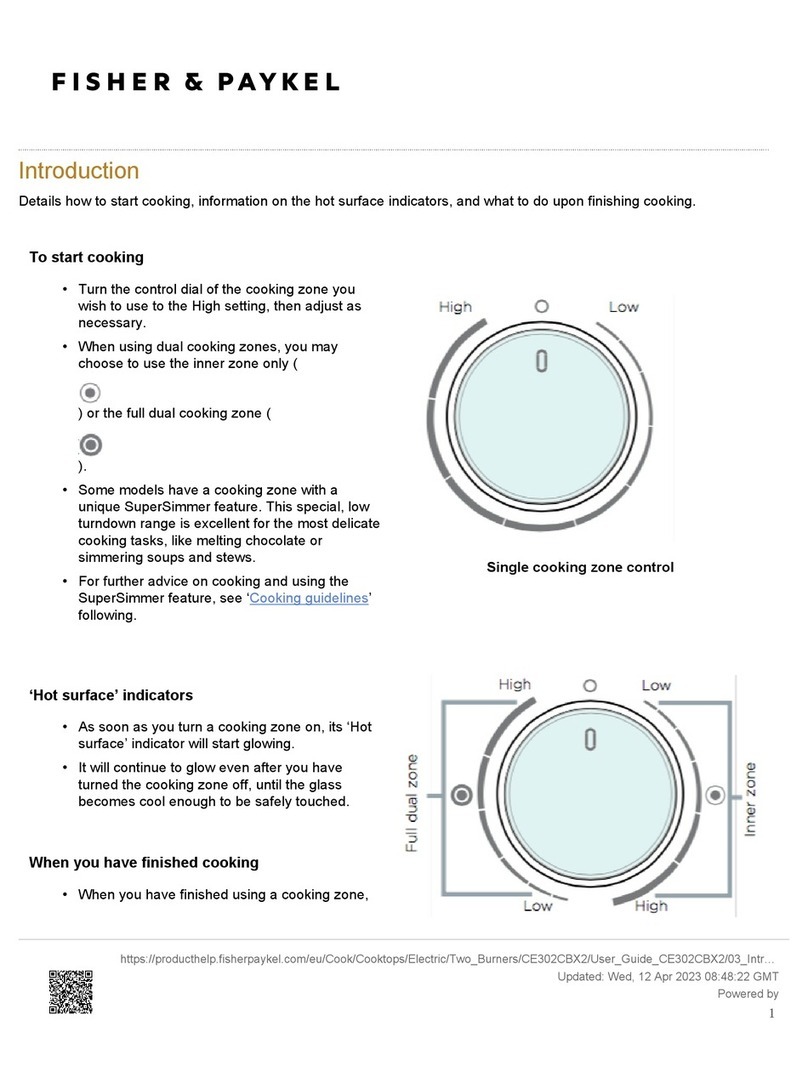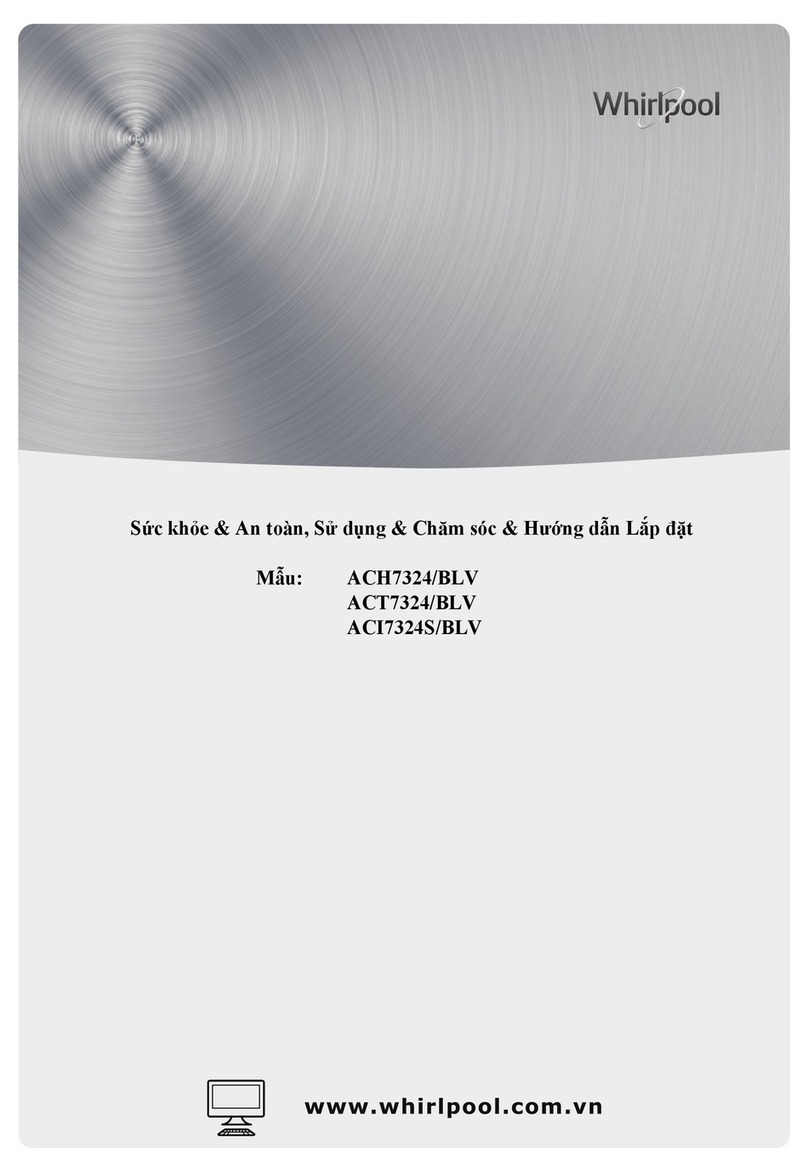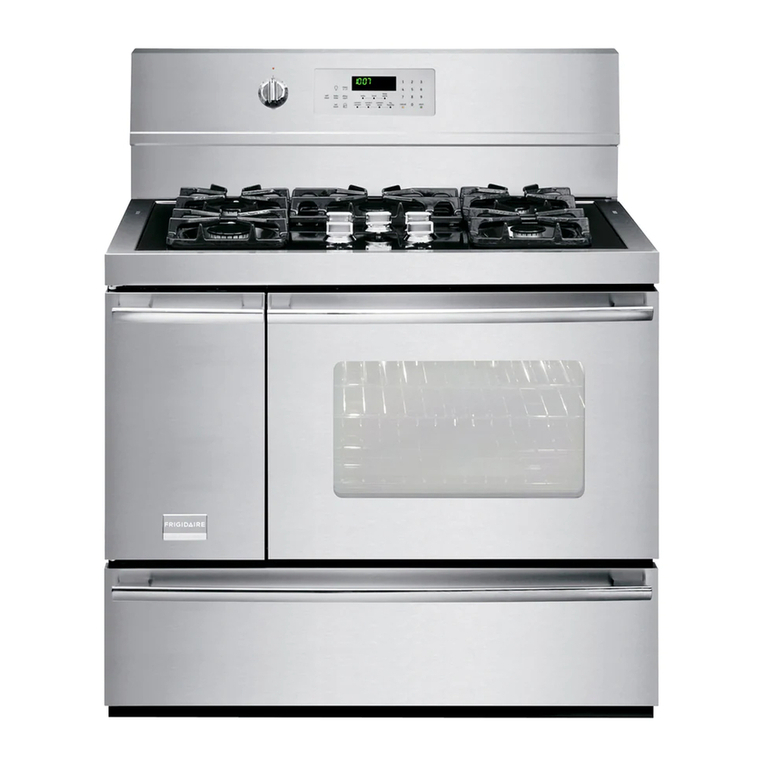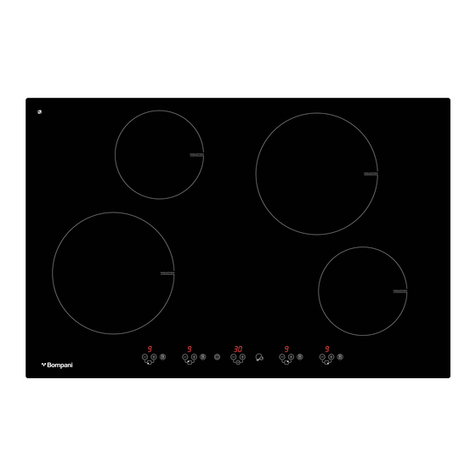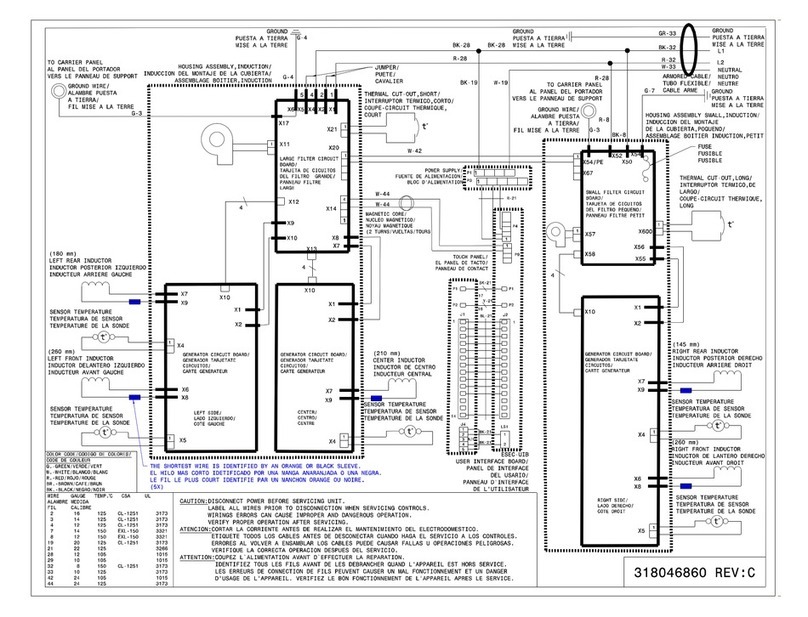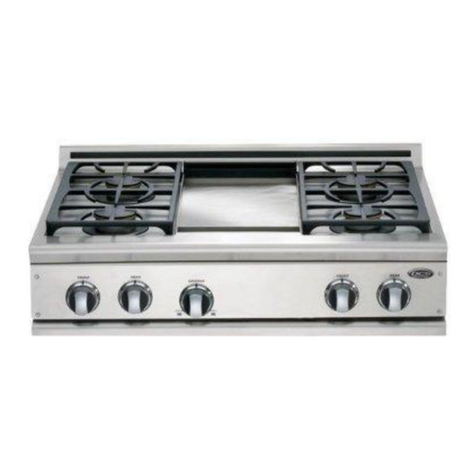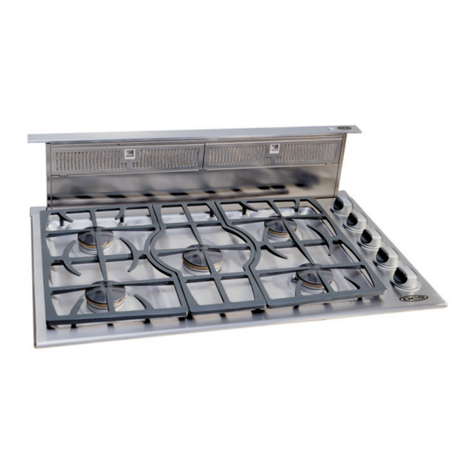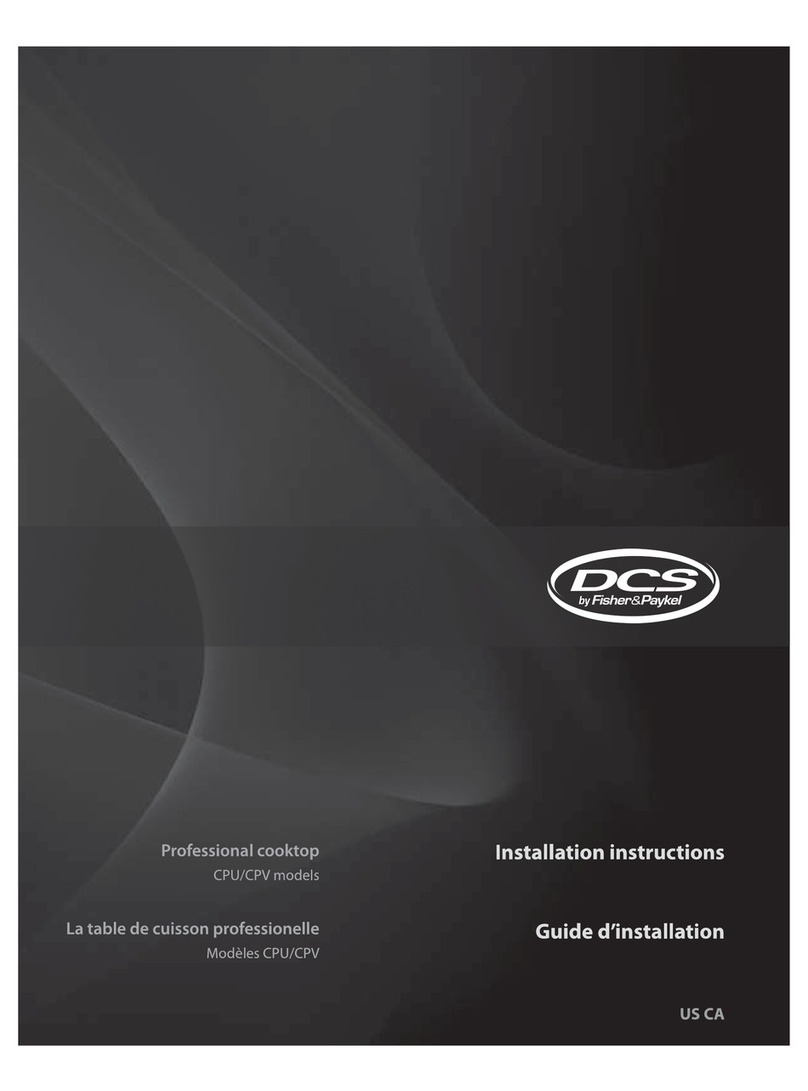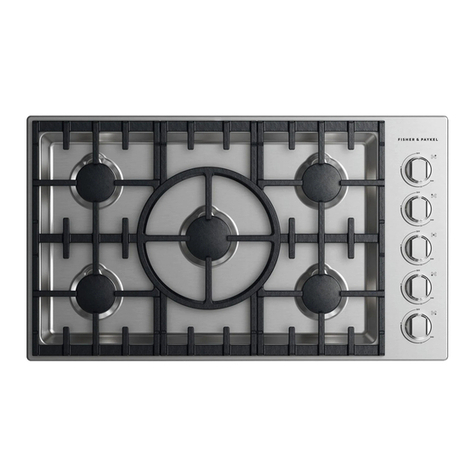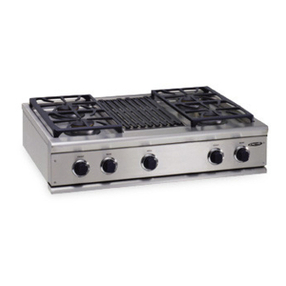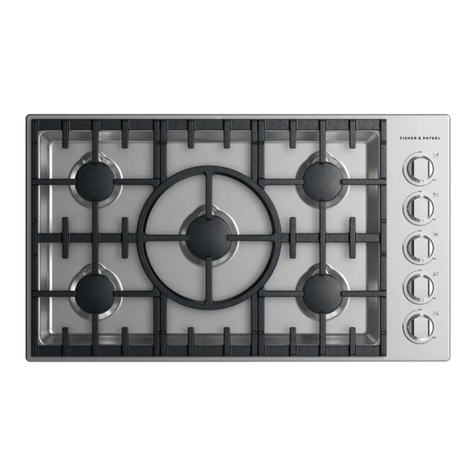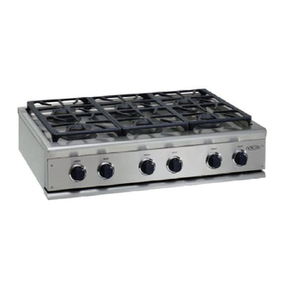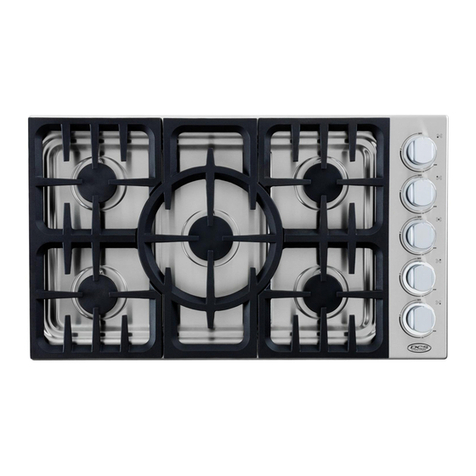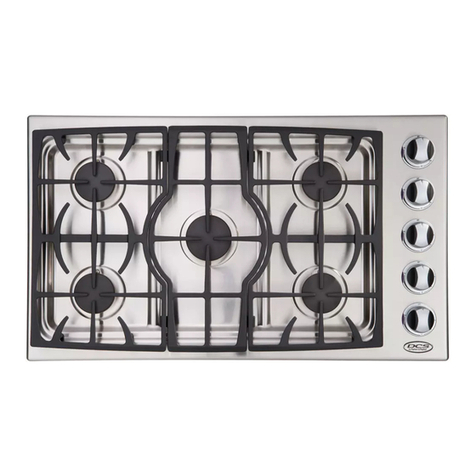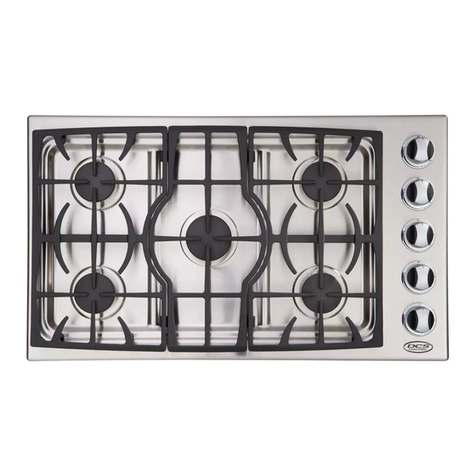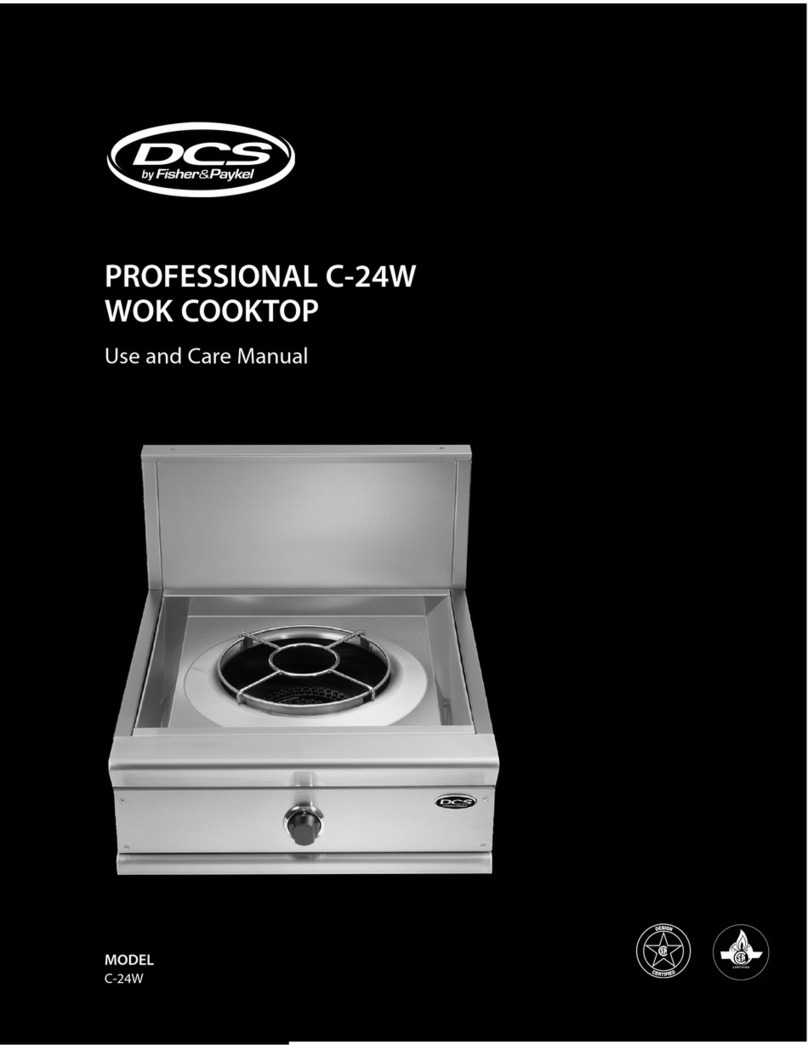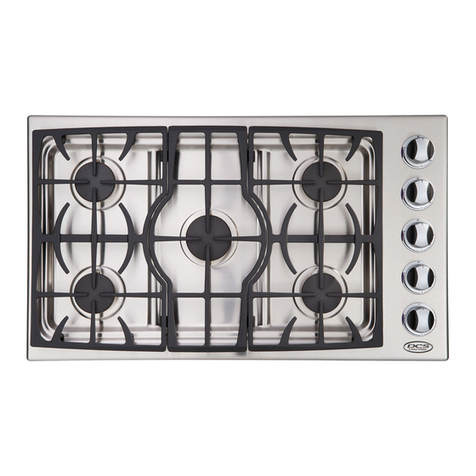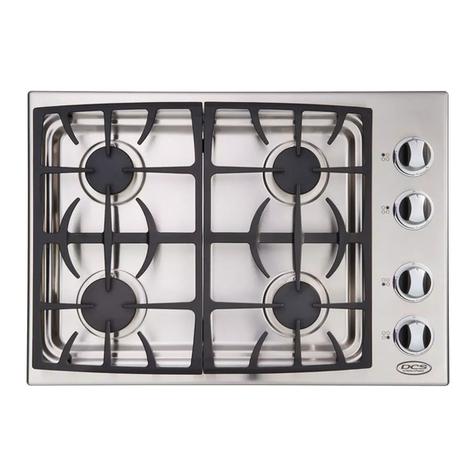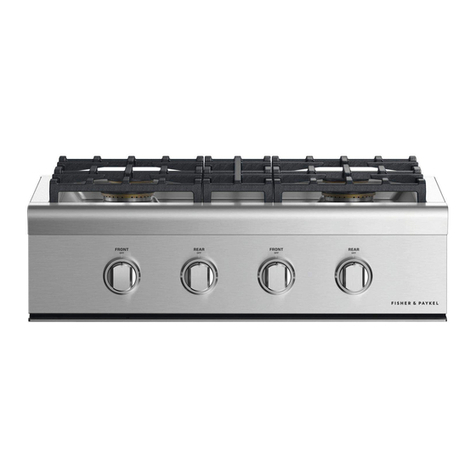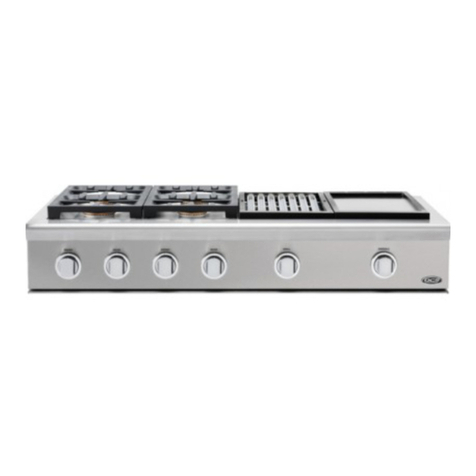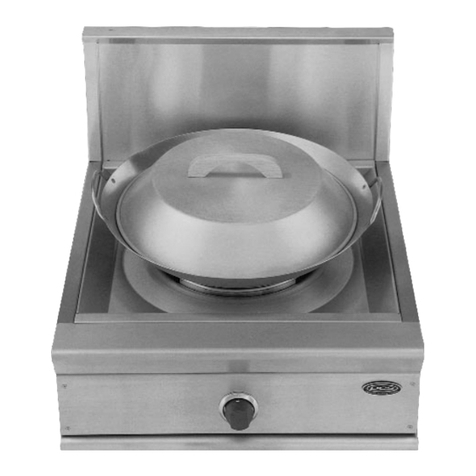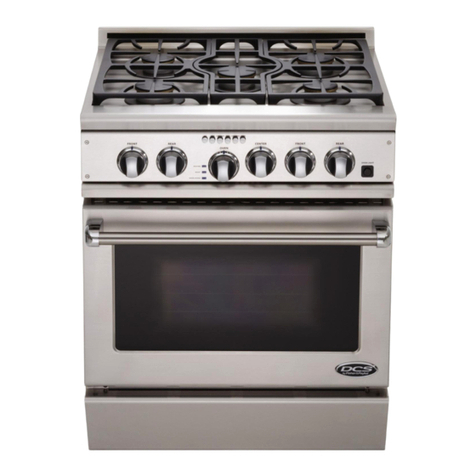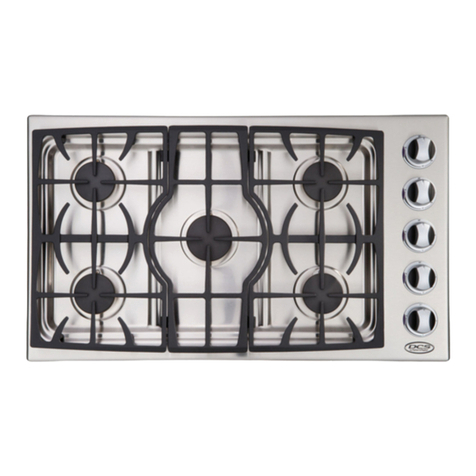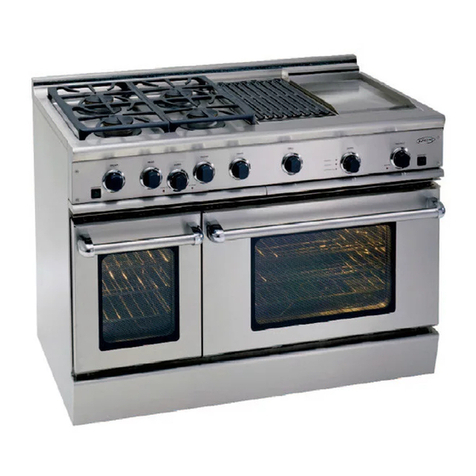4
SAFETY PRACTICES AND PRECAUTIONS
When properly cared for, your new DCS Appliance has been designed to be a safe, reliable cooking appliance.
When using this restaurant caliber appliance, use it with extreme care, as this type appliance provides intense
heat which can increase the accident potential. Basic safety precautions must be followed when using kitchen
appliances, including the following:
■
Read the Use and Care Manual which came with this appliance thoroughly before using your new appliance. This
will help to reduce the risk of fire, electric shock, or injury to persons.
■
Begin by insuring proper installation and servicing. Follow the installation instructions in this manual. Be sure to
have a qualified technician install and ground this appliance before using.
■
Have the installer show you where the gas supply shut-off valve is located so you will know how and where to
turn off the gas to the appliance.
■
If you smell gas, the installer has not done a proper job of checking for leaks. You can have a small leak and
therefore a faint gas smell if the connections are not completely tight. Finding a gas leak is not a “do-it-yourself”
procedure. Some leaks can only be found with the burner control in the “ON” position and for your protection it
must be done by a qualified service technician.
■
If by some chance a burner goes out and gas escapes, open a window or a door to let the room air out. Do not
attempt to use the appliance until the gas has had time to dissipate. Follow the instructions on page 1, “For your
safety – if you smell gas”.
■
This appliance has been factory assembled for natural or LP gas. It should be correctly adjusted from the factory
for the type of gas that is used.
■
Do not repair or replace any part of this appliance unless it is specifically recommended in this manual. All other
servicing should be referred to a qualified technician.
■
Children should not be left alone or unattended in an area where appliances are in use. They should never be
allowed to turn knobs, push buttons, sit or stand on, and/or touch any part of an appliance while in operation.
■
Children in walkers, or children crawling can be attracted to the round oven door handle and may grab and open
the oven door. This can result in injury from the door being pulled open on a child, or severe burns if the oven is
in use and hot.
WARNING:
Do not store items of interest to children above or at the back of any appliance. Children could be seriously injured
if they should climb onto the appliance to reach these items.
■
Never store anything in the oven or on the cooktop. Flammable materials can catch fire, plastic items may melt or
ignite and other types of items could be ruined.
■
Do not hang articles from any part of the appliance or place anything against the oven. Some fabrics are quite
flammable and may catch on fire.
■
If the appliance is near a window be certain the curtains do not blow over or near the cooktop burners; they
could catch on fire.
■
Do not use water on grease fires. Turn all burners “OFF”, then smother the fire with baking soda or use a dry
chemical or foam-type fire extinguisher.
■
Never let clothing, pot holders, or other flammable materials come in contact with, or too close to, any burner or
burner grate until it has cooled. Fabric may ignite and result in personal injury.
■
Be certain to use only dry pot holders: moist or damp pot holders on hot surfaces may cause burns from steam.
Do not use a towel or other bulky cloth in place of pot holders. Do not let pot holders touch hot burners, or
burner grates.
